
Beyond the Housing Binary: 1900s Spokane
Amanda Beck, AICP, Planner II, 509.625.6500
Monday, February 6, 2023 at 1:27 p.m.

Spokane in the early 1900s was popping. The City’s appeal is apparent in the population boom that occurred.
Even the 1899 Great Fire, which destroyed 32 blocks of downtown, didn’t slow down the pace of growth. Instead, and miraculously, on the one-year anniversary of the Great Spokane Fire the City had built back more than 500 buildings and was poised to continue growing. The untapped riches of timber, cattle, agriculture, and mining in the American West that helped draw Americans and recent immigrants westward added a helping hand to the City’s recovery, as many hands were needed to rebuild the commercial core of the City and work for the ever-growing industries and businesses.
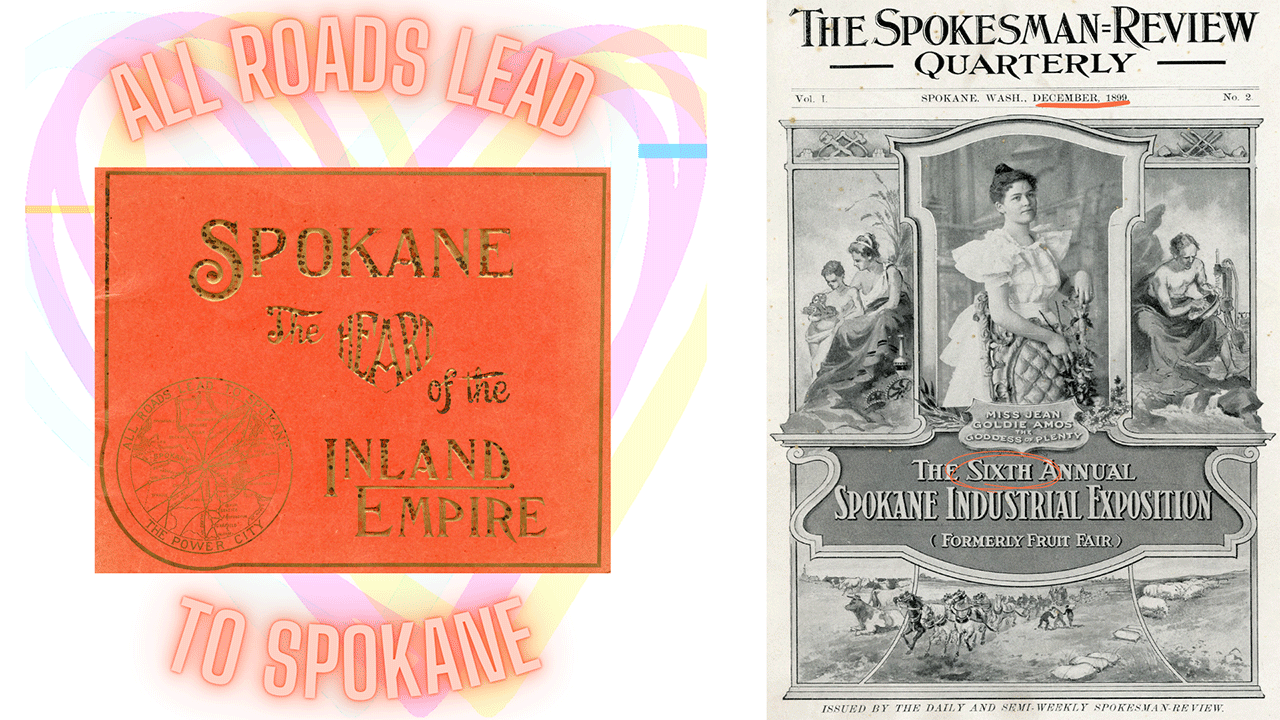
The housing journey of new and existing residents in the “Heart of the Inland Empire” had to start somewhere, which is why housing diversity was so important then and remains so today with the housing crisis.
Getting back to our diverse roots, last year the City adopted the Building Opportunity and Choices for All interim zoning ordinance to increase development of townhomes, two-, three-, and four-unit residential structures. Updating housing policies in the Comprehensive Plan, and then corresponding updates to the development code, are being developed under the next step in this process, Building Opportunity for Housing. Updates will increase the types of housing allowed by development code, creating an opportunity for more housing diversity. Proposed changes mirror Spokane’s diverse housing history so that there are options for the variety of housing needs in our community.
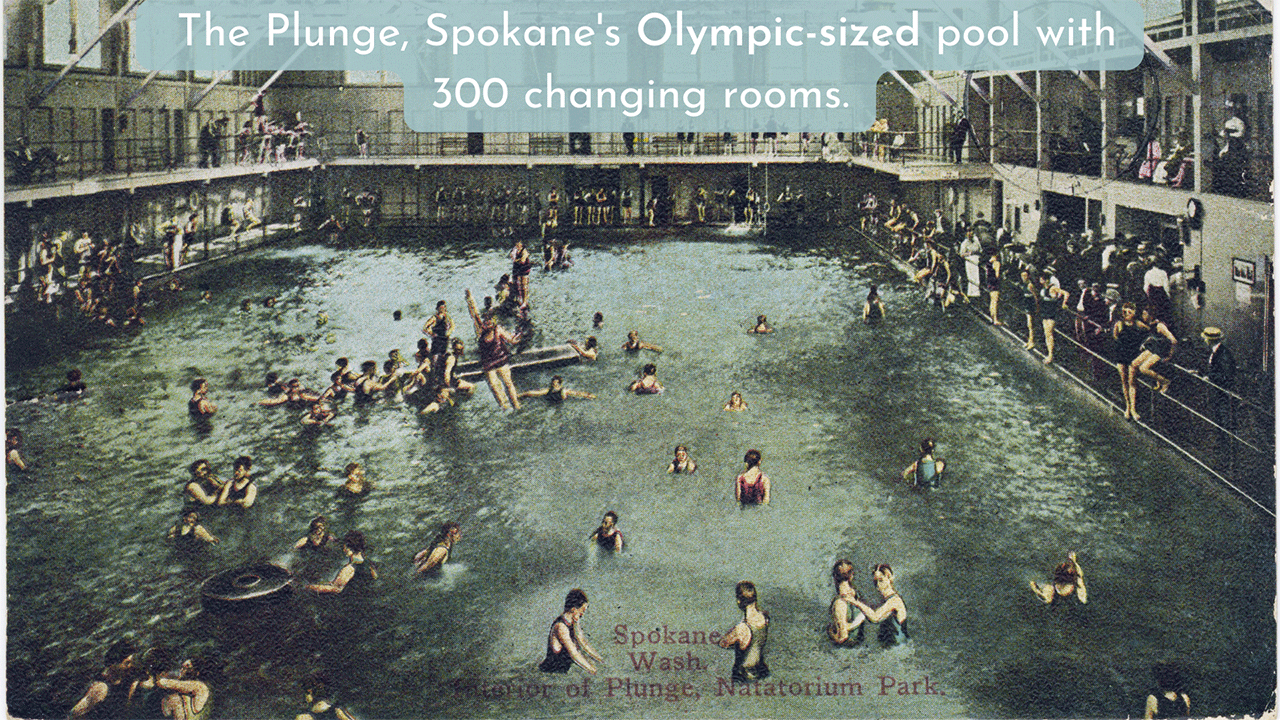
In 1900 there were 36,848 people living in the City. By the 1910 Census, the number had doubled to a population of 104,402. But where were all these people resting their heads at night? This was a time when housing was a much more fluid concept, and many in America called a single-occupancy room, or even just a bed, their home. While owning a home might have been a goal of many fortune seekers, a person had to start somewhere. Boarding houses, lodging houses, and other single-room occupancy buildings, which sometimes used the word apartment or hotel, catered to the influx of people moving to Spokane. And as people’s situations changed, they moved into other accommodations such as mansion apartments, or built duplexes to live in one side and earn income from renting the other unit, all as their housing needs or income allowed.
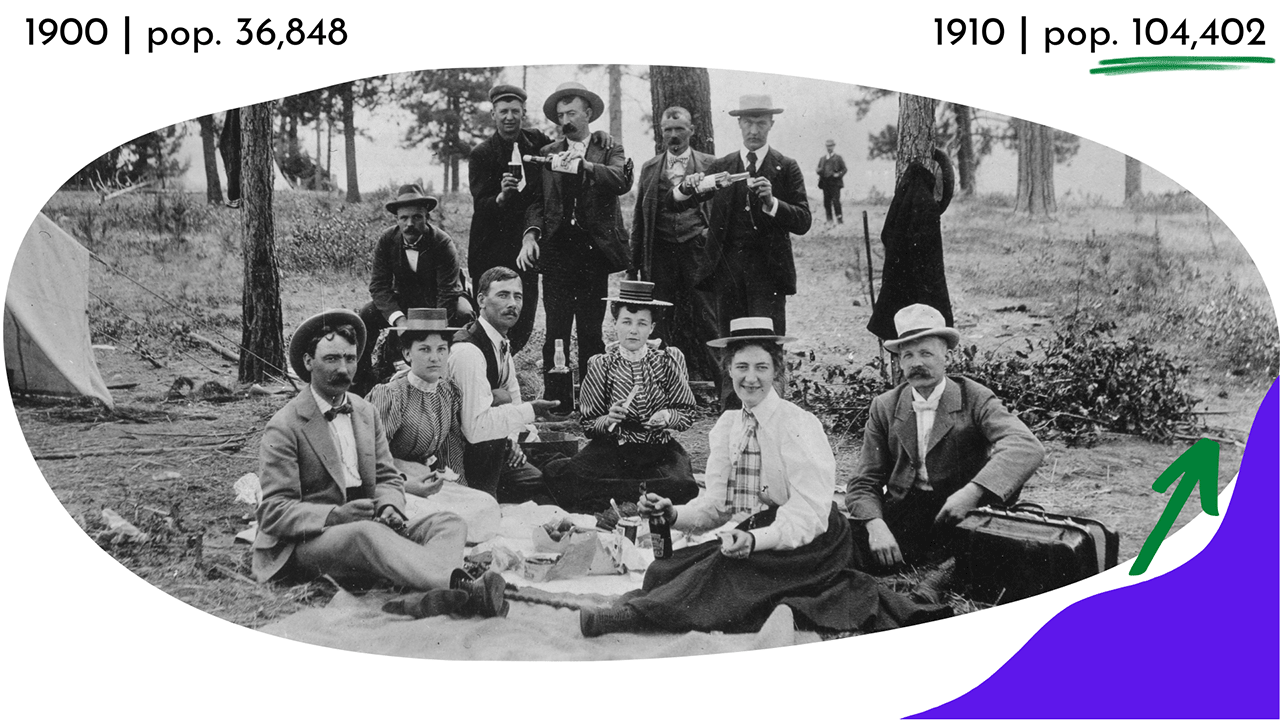
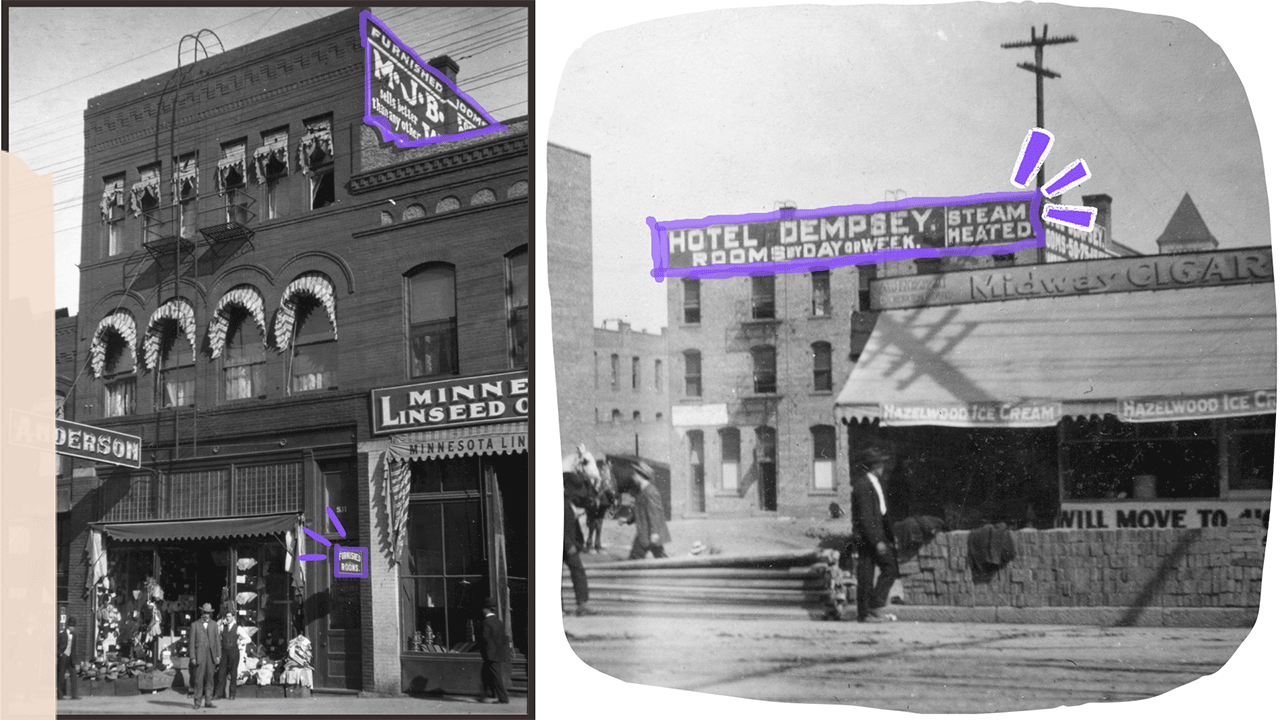
With maintenance, cleaning, and cooking taken care of by the building owner, residents living in these types of housing could focus on their employment and social lives after work. Rather than needing space in your living unit for a kitchen, you could walk a few blocks to one of the many restaurants or saloons in downtown, treating the central business district as an extension of your living space. Spokane’s downtown was a melting pot of people. And, just like today housing options were impacted by where someone was from, their educational background, profession, and income. Housing could range from just a bed, a room with a wardrobe and a shared bathroom for the floor, to a unit in a triplex or a single-family detached house.
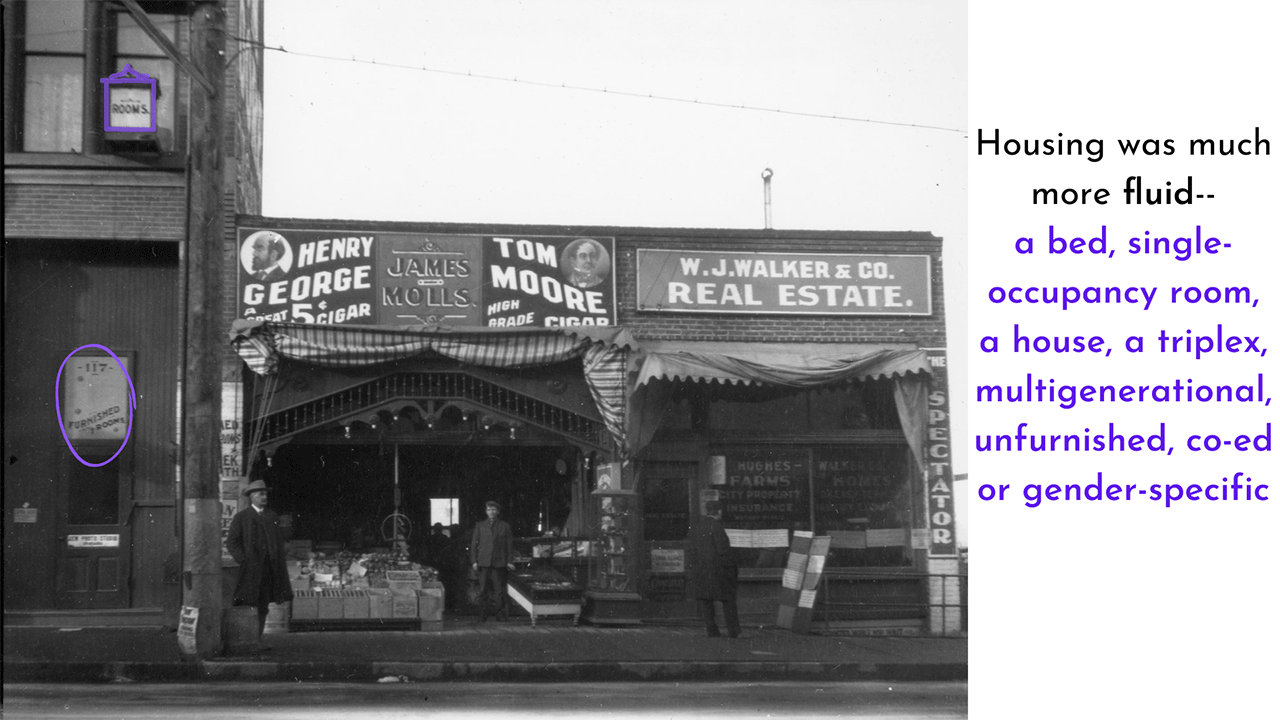
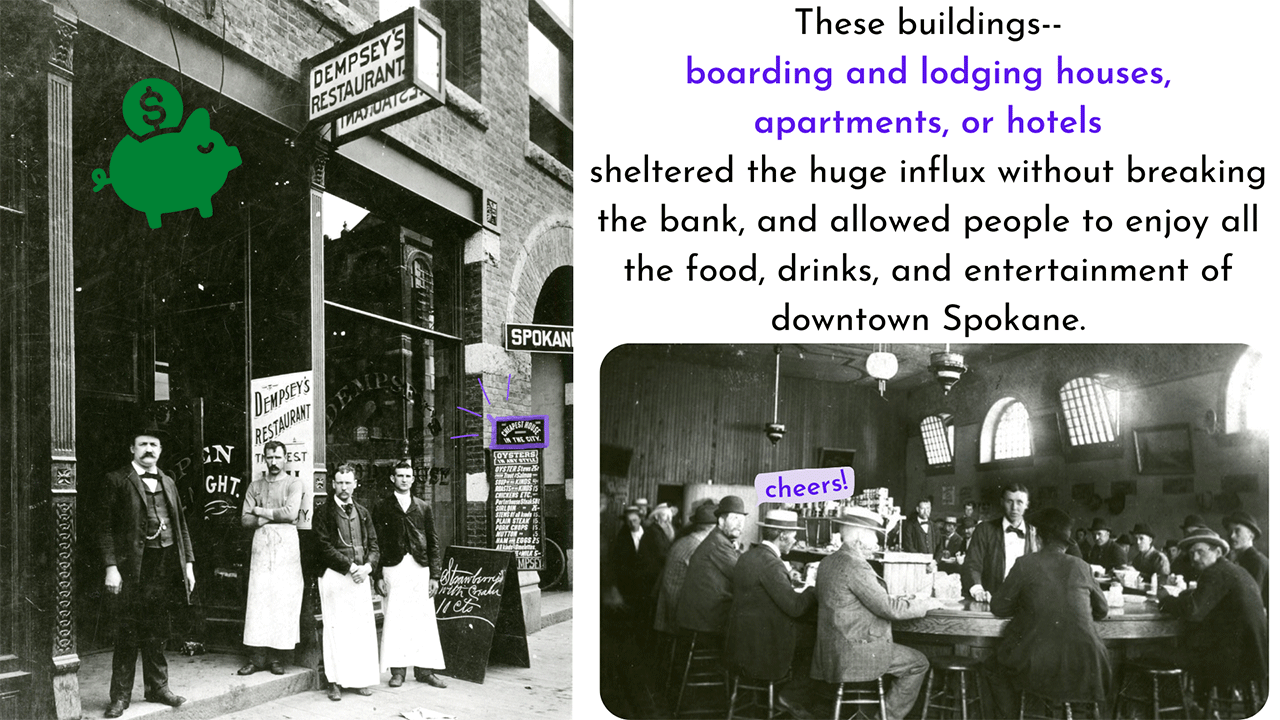
Whatever name they went by—boarding houses, single-room occupancy hotels, lodging houses— these buildings provided crucial abundant and affordable housing to the thousands moving to Spokane. As residents were able, they moved to their next residence in their housing journey, be it a duplex that supplied additional income or a single-family home that afforded them a view of Mount Spokane. And those workers fueled the industries and businesses that continued to build up the city over the next several decades.
Want to look at more historic photos, or read more about housing history?
- Spokane Historic Preservation Office
- Northwest Museum of Arts & Culture, Libby Studio Photograph Collection
- Spokane Library, Ned M. Barnes Northwest Room (Central Library)
- Washington State Digital Archives
- National Register of Historic Places “Single Room Occupancy Hotels in the Central Business District of Spokane, WA 1900-1910”
- Bloomberg- The Rise and Fall of the American SRO
- Encyclopedia of Greater Philadelphia- Boarding and Lodging Houses
More About...
- Affordable Housing
- Attainable Housing
- Building Opportunities and Choices for All
- Building Opportunity for Housing
- Community
- Development
- Engagement
- Housing
- Housing Action Plan
- Housing Crisis
- Live
- Neighborhoods
- Shaping Spokane Housing
- Workforce Housing
